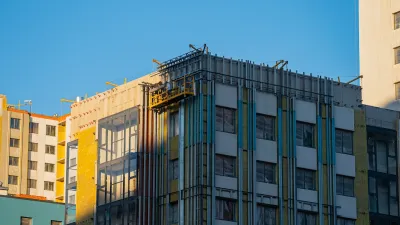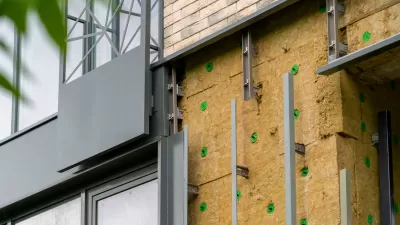William Pentland notes a crescendo in the clamor for green buildings in the upscale, commercial market.
As the fascination with green design gains momentum, environmentally minded practices become the standard. Nowhere is that more apparent than in commercial real estate, where in recent years, the market for sustainable products has skyrocketed – driven more by demand than government regulation.
"In 2010, a third of all new commercial construction was green, amounting to a $54 billion market for commercial green buildings," Pentland writes. "By 2015, green buildings in the commercial sector are expected to triple."
But the trend has not been consistent across the board. Commercial buildings are categorized into three classes based on their "ability to attract high-value tenants:" Class A buildings are typically home to high-profile offices, demanding above-average rent; on the other end of the spectrum, Class C buildings are merely functional spaces at below-average rent.
And, quite predictably, "the green paradigm has achieved the deepest penetration" in the Class A market.
As Pentland explains, "Many tenants are willing to pay a premium for space in green buildings because of the lower operating costs, higher worker productivity and reputational benefits associated with the superior environmental performance of green buildings."
FULL STORY: The Brilliant Economics of Green Buildings

Manufactured Crisis: Losing the Nation’s Largest Source of Unsubsidized Affordable Housing
Manufactured housing communities have long been an affordable housing option for millions of people living in the U.S., but that affordability is disappearing rapidly. How did we get here?

Americans May Be Stuck — But Why?
Americans are moving a lot less than they once did, and that is a problem. While Yoni Applebaum, in his highly-publicized article Stuck, gets the reasons badly wrong, it's still important to ask: why are we moving so much less than before?

Using Old Oil and Gas Wells for Green Energy Storage
Penn State researchers have found that repurposing abandoned oil and gas wells for geothermal-assisted compressed-air energy storage can boost efficiency, reduce environmental risks, and support clean energy and job transitions.

Updating LA’s Tree Rules Could Bring More Shade to Underserved Neighborhoods
A new USC study finds that relaxing Los Angeles’ outdated tree planting guidelines could significantly expand urban tree canopy and reduce shade disparities in lower-income neighborhoods, though infrastructure investments are also needed.

California's Canal Solar Projects Aim to Conserve Resources and Expand Clean Energy
California’s Project Nexus has begun generating electricity from solar panels installed over irrigation canals, with researchers and state agencies exploring statewide expansion to conserve water and boost clean energy production.

HHS Staff Cuts Gut Energy Assistance Program
The full staff of a federal program that distributes heating and cooling assistance for low-income families was laid off, jeopardizing the program’s operations.
Urban Design for Planners 1: Software Tools
This six-course series explores essential urban design concepts using open source software and equips planners with the tools they need to participate fully in the urban design process.
Planning for Universal Design
Learn the tools for implementing Universal Design in planning regulations.
Heyer Gruel & Associates PA
City of Moreno Valley
Institute for Housing and Urban Development Studies (IHS)
City of Grandview
Harvard GSD Executive Education
Salt Lake City
NYU Wagner Graduate School of Public Service
City of Cambridge, Maryland





























